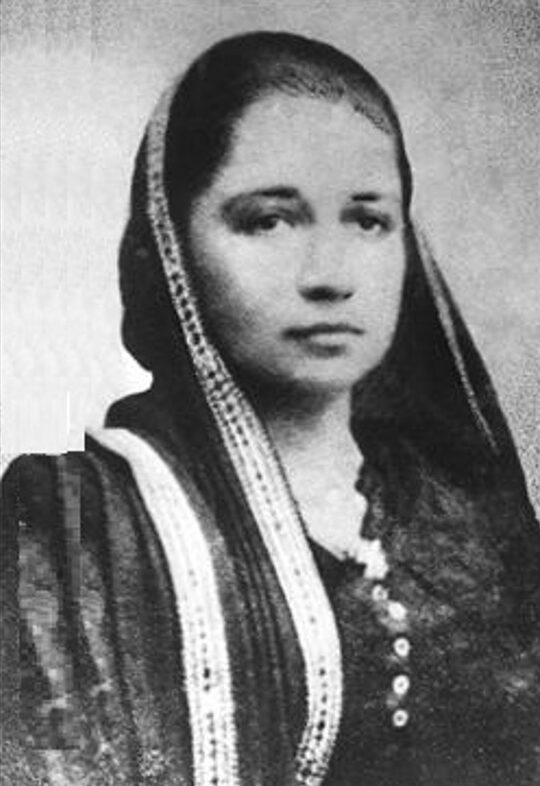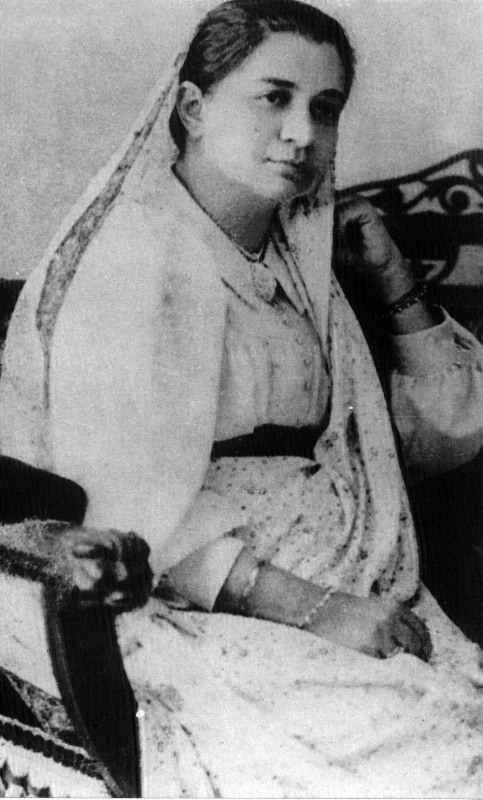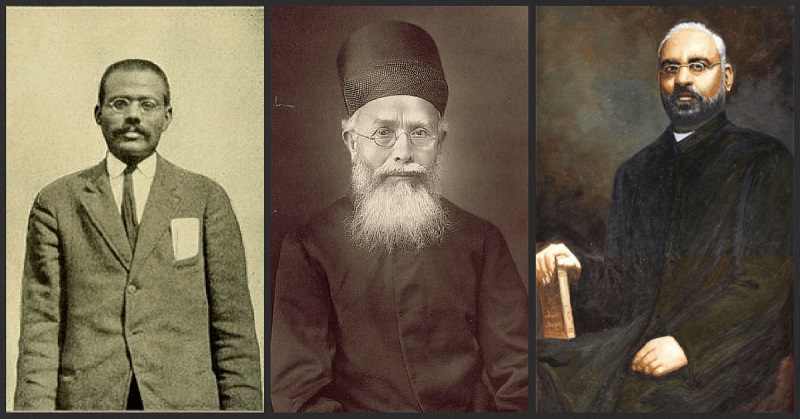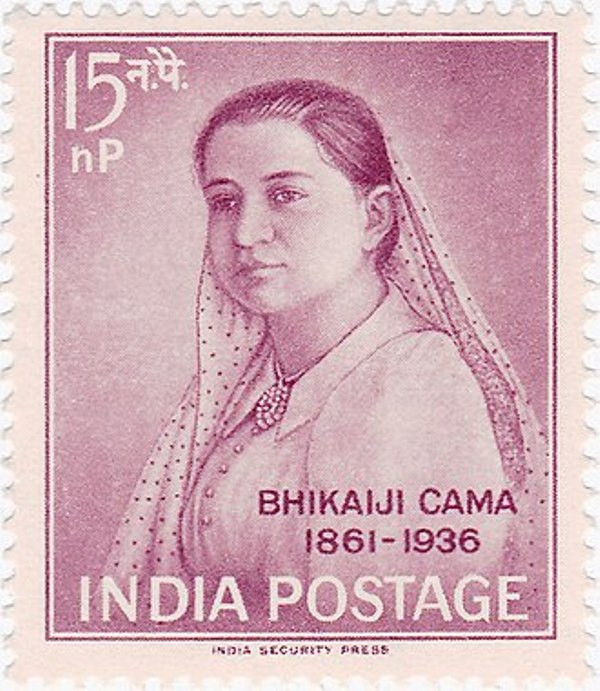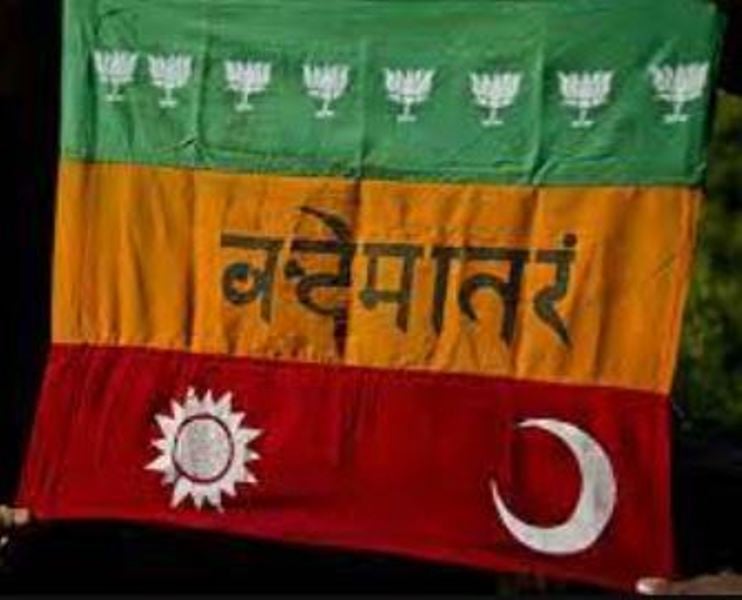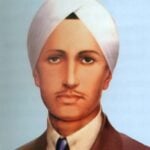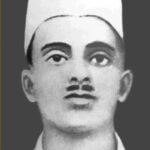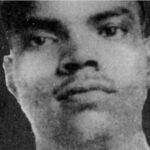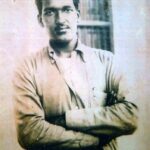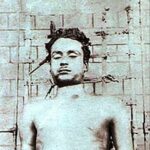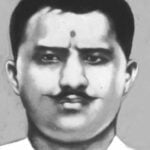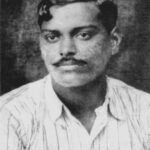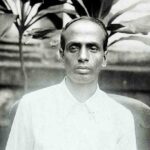Bhikaiji Cama Age, Death, Husband, Children, Family, Biography & More
| Bio/Wiki | |
|---|---|
| Name earned | Madam Cama [1]Byju's |
| Full name | Bhikaiji Rustom Cama [2]Byju's |
| Profession | Freedom Fighter |
| Famous for | • Being the first person who unfurled the 'Flag of Indian Independence' at the ‘Socialist Congress’ event at Stuttgart in Germany on 22nd August 1907. • Being considered as "Mother of the Indian Revolution." |
| Physical Stats & More | |
| Eye Colour | Black |
| Hair Colour | Black |
| Personal Life | |
| Date of Birth | 24 September 1861 (Tuesday) |
| Birthplace | Navsari, Bombay Presidency, British India |
| Date of Death | 13 August 1936 |
| Place of Death | Parsi General Hospital, Mumbai |
| Age (at the time of death) | 74 Years |
| Death Cause | Prolonged Illness [3]Byju's |
| Zodiac sign | Libra |
| Nationality | Indian |
| Hometown | Navsari, Bombay Presidency, British India |
| School | Alexandra Girls’ English Institution |
| Educational Qualification | School education from Alexandra Girls’ English Institution, Mumbai [4]Byju's |
| Religion | Zoroastrianism [5]The Shaping of Modern Gujarat: Plurality, Hindutva, and Beyond |
| Caste | Parsi [6]Byju's |
| Relationships & More | |
| Marital Status (at the time of death) | Married |
| Marriage Year | 1885 |
| Family | |
| Husband | Rustom Cama (British lawyer) |
| Parents | Father- Sorabji Framji Patel (Lawyer and a merchant) Mother- Jaijibai Sorabji Patel |
Some Lesser Known Facts About Bhikaiji Cama
- Bhikaiji Cama was an Indian freedom fighter who is considered the first person who unfurled the Flag of Indian Independence at Stuttgart, Germany on 22 August 1907. She is also known as the “Mother of the Indian Revolution.”
- The parents’ of Bhikaiji Cama belonged to a well known Parsi community in Bombay. Her husband, Rustom Cama, also belonged to a rich family. His father, K. R. Cama, was a Parsi scholar who was also an Indian freedom fighter.
- In September 1896, the plague hit Bombay city which was later declared the Bombay plague epidemic by the British government in India. Bhikaiji Cama voluntarily nursed and served the plague hit patients. During this service, she too caught the disease that left her in physical weakness. Soon, she went to Europe on the advice of the doctors for further treatment.
- After six years, Bhikaiji Cama decided to live in London and shifted there in 1902. Bhikaiji Cama came in contact with Dadabhai Naoroji in London. He was a revolutionary freedom fighter who was fighting for the Independence of India in England. He was the leader of the British Committee of the Indian National Congress. Impressed by his patriotic views, Bhikaiji Cama joined the Indian National Congress where she started working as an assistant of Dadabhai Naoroji. Soon after joining the British Committee of Indian National Congress in England, she began addressing the public speeches at London’s Hyde Park with Lala Har Dayal and Shyamji Krishna Varma who were also fighting for India’s independence on foreign soil.
- Shyamji Krishna Varma founded an organisation named the Indian Home Rule Society in February 1905 which was actively joined by Bhikaiji Cama, Dadabhai Naoroji and Singh Rewabhai Rana. Soon, the British government issued her a notice to leave London due to her continuous involvement in anti-British activities. She was also given a chance by the police to stay in London on the condition of not involving herself in anti-colonial activities. However, she denied the offers and moved to Paris. In France, she founded the Paris Indian Society with other Indian freedom fighters such as S. R. Rana and Munchershah Burjorji Godrej.
- Bhikaiji Cama published various books such as Bande Mataram (based on the open Vande Mataram) and Madan Talwar (written after the execution of Indian freedom fighter Madan Lal Dhingra) that were based on the Indian revolutionary independence movements during her exile period in the Netherlands and Switzerland. She exported her writings secretly in India where the French colony of Pondicherry helped her to successfully circulate these books.
- On 22 August 1907, Bhikaiji Cama attended the second Socialist Congress meeting at Stuttgart, Germany as the Indian National Congress party member where she requested equal human rights for the poor people in India who were the victims of the disastrous famine that affected the Indian subcontinent. After the meeting, she unfurled the Flag of Indian Independence and became the first person who did the same on foreign soil. This flag hoisted by Bhikaiji Cama in Germany was modified by her with the help of Vinayak Damodar Savarkar that resembled the Indian flag.
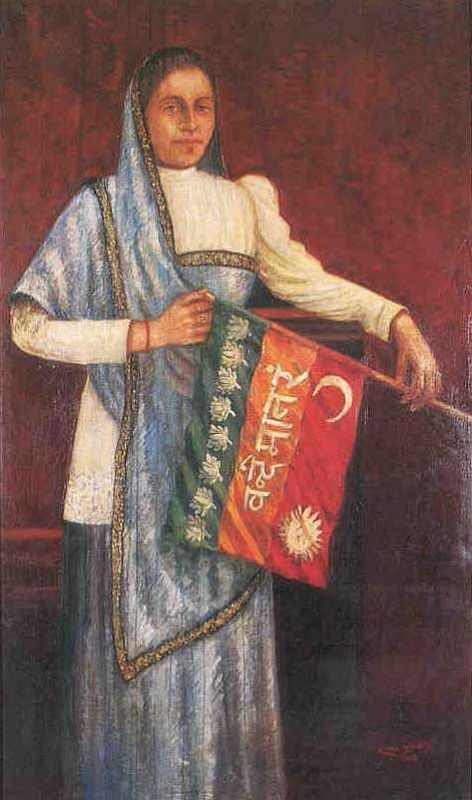
Madam Cama while unfurling the Indian Flag at Stuttgart, GermanyMadam Cama while unfurling the Indian Flag at Stuttgart, Germany
While unfurling the Indian flag during the meeting, she appealed to the freedom lovers to support the struggle of the Indian freedom fighters by supporting the independent Indian flag. She said,
Behold, the flag of independent India is born! It has been made sacred by the blood of young Indians who sacrificed their lives in its honour. In the name of this flag, I appeal to lovers of freedom all over the world to support this struggle.”
She further added,
This is the flag of independent India. I appeal to all gentlemen to stand and salute the flag.”
- During the agitations for Indian independence on foreign soil, the secretary of state for India Sir William Hutt Curzon Wyllie detained the revolutionary Indian freedom fighter Vinayak Damodar Savarkar in 1909. In 1910, the British government issued a notification to deport him to India through the sea route. Savarkar escaped from the police custody at the Marseilles harbour in France. He was told to wait for Cama and others on the shore by his secret companions. However, Cama was late to reach the location and Savarkar was again arrested by the French police. Savarkar was not able to communicate with the police in the custody without the help of Cama. Thus, the French police issued notice to Cama to surrender herself as she was leading these missionaries. Cama did not agree with the conditions of the French government. While in collaboration with the French government, Britishers seized all the properties of Bhikaiji Cama in England. Soon, she was ordered by the French government to leave France. During the same time, Vladimir Lenin, a Russian revolutionary and politician, invited Bhikaiji Cama to the Soviet Union for shelter that she denied.
- Bhikaiji Cama admired the gender equality movements initiated by Christabel Pankhurst and the Suffragette movements. In 1910, she went to Egypt for a general public meeting in Cairo and raised gender equality issues. She asked the general public,
I see here the representatives of only half the population of Egypt. May I ask where is the other half? Sons of Egypt, where are the daughters of Egypt? Where are your mothers and sisters? Your wives and daughters?”
- The Berlin Committee was renamed ‘The Indian Independence Committee’ in 1915. Soon after getting Indian recognition, this committee gave accreditation to the Indian Flag that was unfurled by Bhikaiji in 1907.
- Under the ‘Entente Cordiale’ agreement, the United Kingdom and the French Republic started supporting each other during World War I in 1914. The missionaries associated with the Paris India Society started leaving France. However, Bhikaiji Cama and Singh Rewabhai Rana were not ready to leave their mission too soon. She hide at Rana’s wife home in Arcachon when she was forced to leave the country. Meanwhile, Cama and Rana were advised by Jean Longuet, a supporter, to join M.P. Tirumal Acharya in Spain. Soon, Cama and Rana were detained by the French police in October 1914 when they participated in a campaign initiated by the Punjab regiment troops in Marseilles against the colonial rule in India. In the following year, the French Republic forced Rana and his family to leave France to the Caribbean island of Martinique. Thereafter, Bhikaiji Cama was also arrested by the French. While serving sentence in France, her health collapsed, and soon, she was exempted from the rest of her punishment in November 1917 on the condition that she would report weekly in the nearby police station.
- In 1920, Bhikaiji Cama met two Parsi women named Herabai and Mithan Tata who were fighting for the issue of the right to vote for women. After meeting these women, Bhikaiji commented,
Work for Indian’s freedom and independence. When India is independent women will not only have the right to vote, but all other rights.”
- Bhikaiji Cama was living in exile till 1935 in Europe. During her exile period, she suffered from illness and acute paralysis. The deteriorating health conditions motivated her to write a letter to the British government from Paris. On 24 June 1935, she wrote to the British government through Sir Cowasji Jehangir and assured them that she would not participate in any agitating activities in the future and requested them to send her back to India. Bhikaiji Cama left Paris in November 1935. In the following year, she died in the Parsi hospital in Bombay due to prolonged illness.
- Avabai Petit Orphanage for girls was renamed Bai Avabai Framji Petit Girls’ High School in Mumbai after the death
- After the death of Bhikaiji Cama, her personal belongings and assets were handed over to a trust named Avabai Petit Orphanage for girls in Bombay. This orphanage was later renamed Bai Avabai Framji Petit Girls’ High School, Mumbai which was changed into a girls’ school. Her family got Rs. 54000 from her treasury.
- Later, various streets and roads in Bombay were named to honour the sacrifices of Bhikaiji Cama for India’s struggle for independence.
- On 26 January 1962, a postal stamp of 15 Paise was printed by the government of India under the Indian Posts and Telegraphs Department on the 11th Republic Day of India.
- In 1977, the Indian Coast Guard commission released a vessel titled ‘Priyadarshini-class fast patrol vessel ICGS Bikhaiji Cama’ after the name of Bhikaiji Cama to honour her sacrifices.
- An official building was built after the name of Bhikaiji Cama in South Delhi that were provided for the big Indian government and private offices such as EPFO (www.epfindia.gov.in), Jindal Group, SAIL, GAIL, and EIL.
- The husband of Bhikaiji Cama named ‘Rustom Cama’ was a British admirer while Bhikaiji was a nationalist and an active supporter of the movements against British rule in India. Rustom was a British lawyer who had a soft corner for the Britishers. Bhikaji advocated the views that Britishers exploited India over the years whereas her husband thought that Britishers did a lot for the upliftment of Indian states. These opposite viewpoints led Bhikaiji to involve herself in social work and philanthropic activities.
- The hoisting of the Indian flag on foreign soil was an inspiring moment for various modern-day American and African novelists and writers. A novel titled ‘Dark Princess’ was written by W. E. B. Du Bois in 1928. In 2016, a book was published by an Indian author Racana Bhola Yamini titled ‘The Life and Times of Madam Bhikaji Cama’ on the life journey of Bhikaiji Cama and her contribution to the independence of India. In her book, Racana mentioned the aura of Bhikaiji Cama. She wrote,
When people saw Madam Cama, adorned in a Parsi saree with a full-sleeved blouse, sitting with a glorious face, people started to whisper in low voices. Her head was covered with an end of her saree, which displayed her courtesy, but when the same courteous and well-cultured Indian woman rose to speak in a fluent style, it appeared as if the entire assembly had been put on fire. When the Union Jack was about to be hoisted as a mark of the national flag of India, she opposed it and took out a small tricolour from her bag and waved it in her hands. With this Madam, Cama became the first Indian to hoist the National Flag on foreign soil. This drew a lot of international attention.”
- The “Flag of Indian Independence” was hoisted by Bhikaiji Cama at the International Socialist Conference in Stuttgart, Germany. This flag was made of green, yellow, and red colours in three rows. The colours represented the religions of India such as the Green colour was a sign of the Islam religion, yellow depicted the Hindu religion and red colour was a sign of Buddhism religion in India. There were eight lotuses printed on the upper row in green colour. These lotuses represented the eight provinces of the British government in India. In the middle row, in yellow colour, Vande Mataram was written in Devanagri spirit. Vande Mataram means “[We] Bow to thee Mother [India].” In the last row, there was a sun and a moon that was printed to represent the Islam and Hinduism religions of India.
- Later, this flag was exhibited at the Maratha and Kesari Library in Pune as a historical article for the general public by the government of India.
- During her exile, Bhikaiji Cama travelled to many countries in Europe to gather missionaries to fight against British rule in India. She met with the Indians residing in France and Holland to gather their support. Reportedly, the Britishers banned her entry into India considering her revolutionary background and patriotic outlook.
References/Sources:

